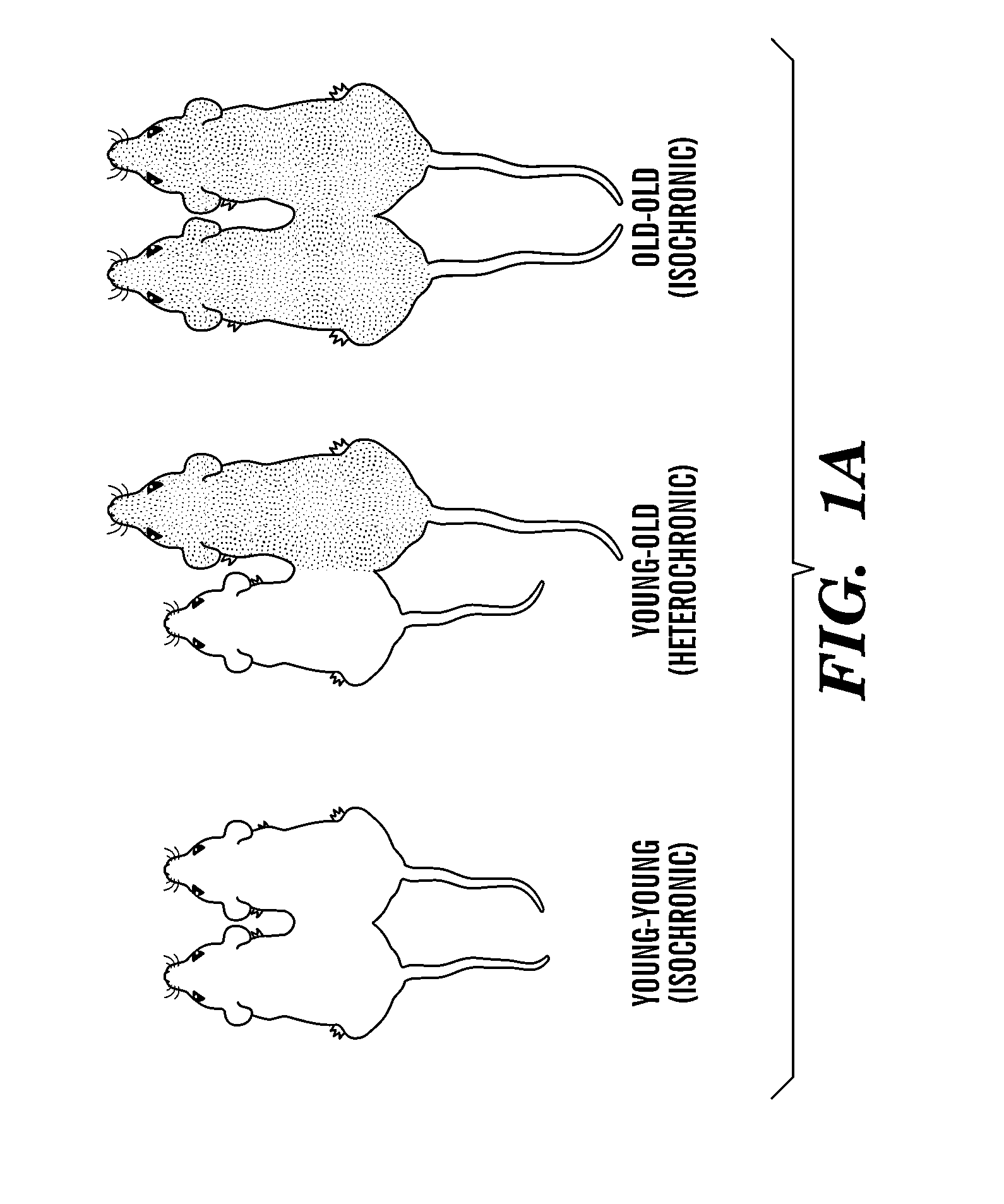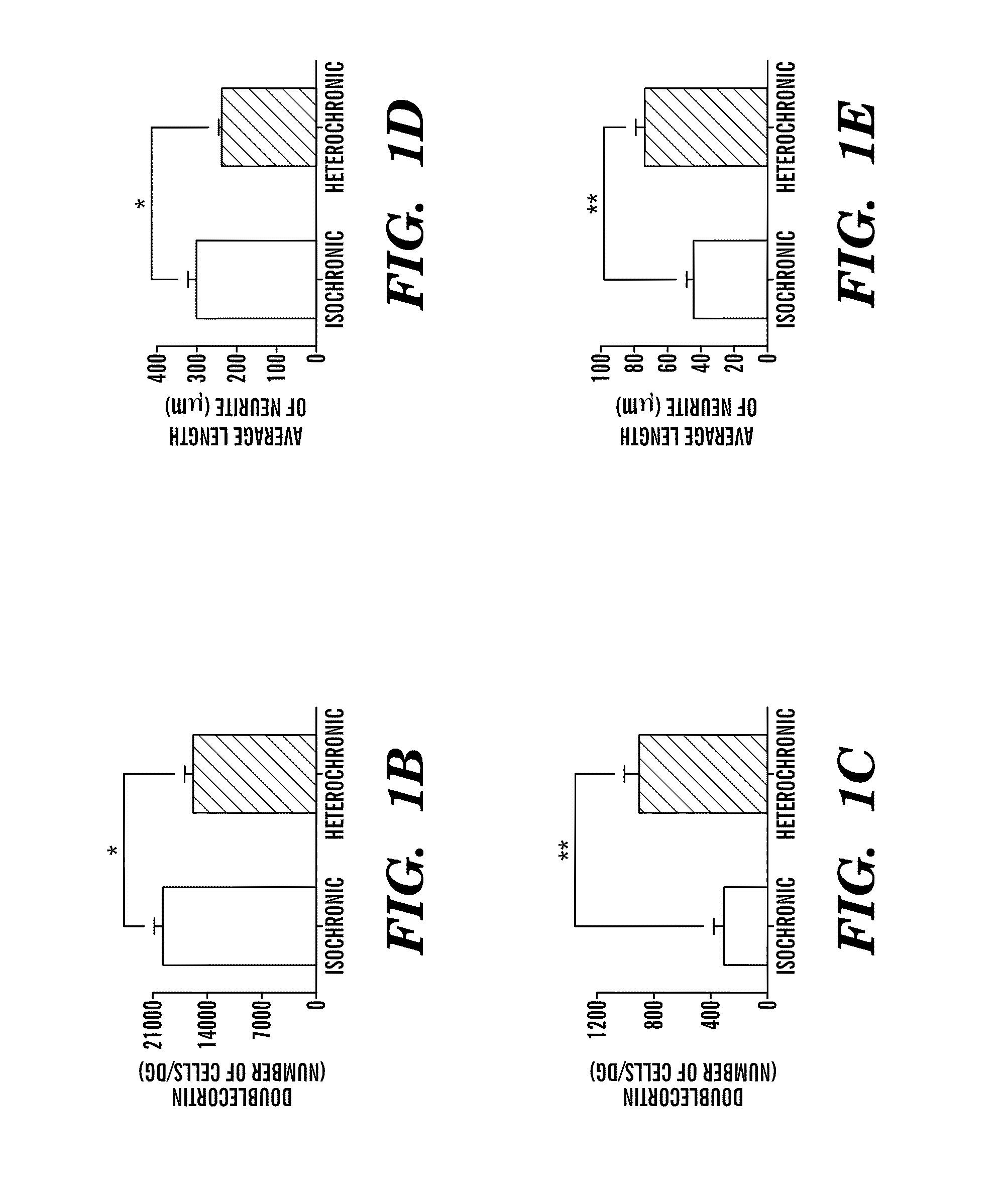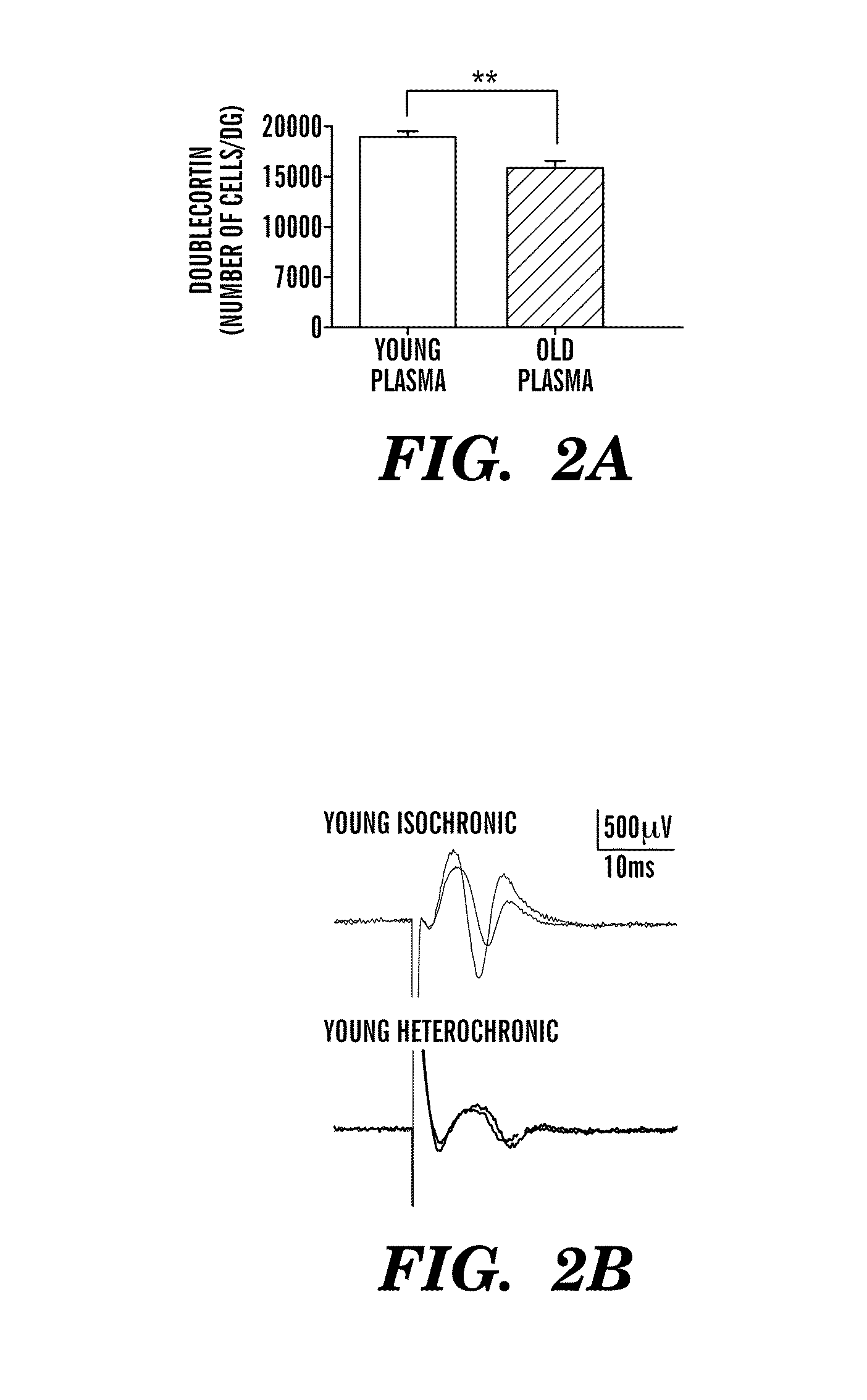Biomarkers of aging for detection and treatment of disorders
a biomarker and aging technology, applied in the field of biomarkers of aging for detection and treatment of disorders, can solve the problems of aging stem cells not being able to maintain both the structure and function of organs within an organism, affecting spatial learning and memory, and affecting the development of adult neurogenesis
- Summary
- Abstract
- Description
- Claims
- Application Information
AI Technical Summary
Benefits of technology
Problems solved by technology
Method used
Image
Examples
example 1
Proteomic Screening of Age-Associated Biomarkers and the Use of these Biomarkers to Assess the Age
[0205]Proteomic Screening of Biomarkers in Human Plasma and the Use of these Biomarkers to Assess the Age of Human
[0206]Healthy control subjects in good health with no signs or symptoms suggesting cognitive decline or neurologic disease were recruited for multicentre studies that aim to identify molecular biomarkers for healthy aging in blood and CSF. Human subjects divisions at each institution approved this study. Following informed consent, all subjects underwent extensive evaluations including medical history, family history, physical and neurologic examinations by clinicians specializing in dementia, laboratory tests, and neuropsychological assessment.
[0207]Human plasma and CSF samples were obtained from academic centers courtesy of Christopher M. Clark, Douglas R. Galasko, Jeffrey A. Kaye, Ge Li, Elaine R. Peskind, and Joseph F. Quinn. Shortly after venous blood draw, EDTA plasma ...
example 2
Age-Associated Changes in the Systemic Milieu Regulate Adult Neorogenesis
[0218]Immunohistochemistry was performed on free-floating sections following standard published techniques28. Primary antibodies were against Dcx (1:500; Santa Cruz), BrdU (1:5000, Accurate Chemical and Scientific Corp.), Sox2 (1:200; Santa Cruz), GFAP (1:1500, DAKO), CD68 (1:50, Serotec), and β-dystroglycan (1:500, Novocastra Labs). Parabiosis surgery followed previously described procedures with the addition of surgical connection of the peritoneum17. Flow cytometric analysis was done on fixed and permeabilized blood plasma cells from GFP and non-GFP parabiotic pairings. Mouse neural progenitor cells were isolated from C57BL / 6. NTERA cells and NPCs were cultured under standard conditions29,30. Carrier free forms of recombinant Eotaxin / CCL11 (100 ng / ml) and β2-microglobulin (100 ng / ml) were added to cell cultures under self-renewal and differentiation conditions every other day following cell plating. Biolumin...
example 3
Modulation of NPC Proliferation and Differentiation In Vitro by β2M
[0233]Without being bound by theory, we suggest that β2M signaling results in decreased NPC proliferation, self-renewal and neuronal differentiation while abrogation of β2M enhances these functions.
[0234]Soluble β2M in the periphery has been shown to directly influence the biology of different cell types in a pleomorphic manner independent of its classical role in the adaptive immune system [67, 68]. In vitro studies using cancer cell lines have also indicated that such cell specific effects by β2M can occur through non-canonical signaling mechanisms independent from its association with MHC1 molecules [1, 2]. To date, work in the CNS has shown that intrinsic β2M functions in synaptic plasticity during both cortical development and in response to injury. β2M's role, however, has been attributed entirely to its involvement with MHC1 molecules [80, 81]. While β2M can act both in conjunction with and independent from MH...
PUM
| Property | Measurement | Unit |
|---|---|---|
| time | aaaaa | aaaaa |
| time | aaaaa | aaaaa |
| pH | aaaaa | aaaaa |
Abstract
Description
Claims
Application Information
 Login to View More
Login to View More - R&D
- Intellectual Property
- Life Sciences
- Materials
- Tech Scout
- Unparalleled Data Quality
- Higher Quality Content
- 60% Fewer Hallucinations
Browse by: Latest US Patents, China's latest patents, Technical Efficacy Thesaurus, Application Domain, Technology Topic, Popular Technical Reports.
© 2025 PatSnap. All rights reserved.Legal|Privacy policy|Modern Slavery Act Transparency Statement|Sitemap|About US| Contact US: help@patsnap.com



